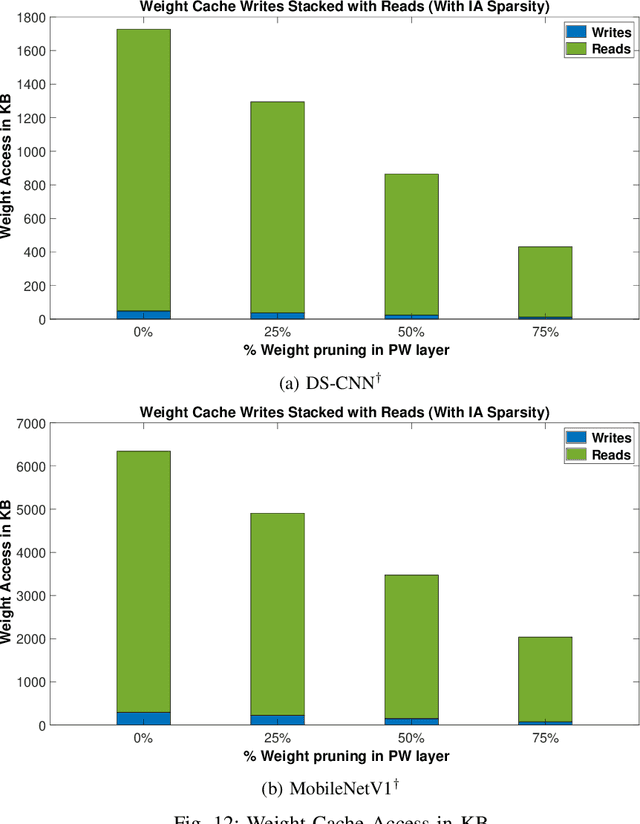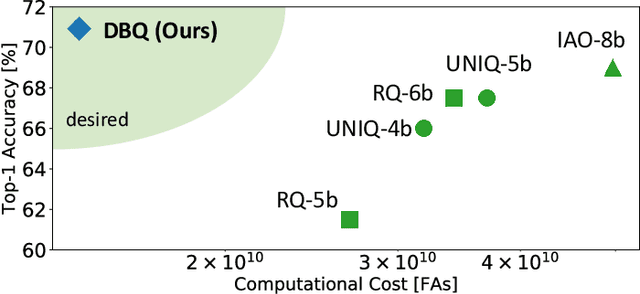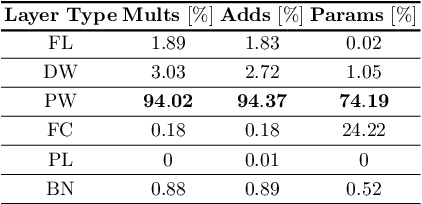Mahesh Mehendale
HOMI: Ultra-Fast EdgeAI platform for Event Cameras
Aug 18, 2025Abstract:Event cameras offer significant advantages for edge robotics applications due to their asynchronous operation and sparse, event-driven output, making them well-suited for tasks requiring fast and efficient closed-loop control, such as gesture-based human-robot interaction. Despite this potential, existing event processing solutions remain limited, often lacking complete end-to-end implementations, exhibiting high latency, and insufficiently exploiting event data sparsity. In this paper, we present HOMI, an ultra-low latency, end-to-end edge AI platform comprising a Prophesee IMX636 event sensor chip with an Xilinx Zynq UltraScale+MPSoC FPGA chip, deploying an in-house developed AI accelerator. We have developed hardware-optimized pre-processing pipelines supporting both constant-time and constant-event modes for histogram accumulation, linear and exponential time surfaces. Our general-purpose implementation caters to both accuracy-driven and low-latency applications. HOMI achieves 94% accuracy on the DVS Gesture dataset as a use case when configured for high accuracy operation and provides a throughput of 1000 fps for low-latency configuration. The hardware-optimised pipeline maintains a compact memory footprint and utilises only 33% of the available LUT resources on the FPGA, leaving ample headroom for further latency reduction, model parallelisation, multi-task deployments, or integration of more complex architectures.
Neural Signal Compression using RAMAN tinyML Accelerator for BCI Applications
Apr 09, 2025Abstract:High-quality, multi-channel neural recording is indispensable for neuroscience research and clinical applications. Large-scale brain recordings often produce vast amounts of data that must be wirelessly transmitted for subsequent offline analysis and decoding, especially in brain-computer interfaces (BCIs) utilizing high-density intracortical recordings with hundreds or thousands of electrodes. However, transmitting raw neural data presents significant challenges due to limited communication bandwidth and resultant excessive heating. To address this challenge, we propose a neural signal compression scheme utilizing Convolutional Autoencoders (CAEs), which achieves a compression ratio of up to 150 for compressing local field potentials (LFPs). The CAE encoder section is implemented on RAMAN, an energy-efficient tinyML accelerator designed for edge computing, and subsequently deployed on an Efinix Ti60 FPGA with 37.3k LUTs and 8.6k register utilization. RAMAN leverages sparsity in activation and weights through zero skipping, gating, and weight compression techniques. Additionally, we employ hardware-software co-optimization by pruning CAE encoder model parameters using a hardware-aware balanced stochastic pruning strategy, resolving workload imbalance issues and eliminating indexing overhead to reduce parameter storage requirements by up to 32.4%. Using the proposed compact depthwise separable convolutional autoencoder (DS-CAE) model, the compressed neural data from RAMAN is reconstructed offline with superior signal-to-noise and distortion ratios (SNDR) of 22.6 dB and 27.4 dB, along with R2 scores of 0.81 and 0.94, respectively, evaluated on two monkey neural recordings.
RAMAN: A Re-configurable and Sparse tinyML Accelerator for Inference on Edge
Jun 10, 2023



Abstract:Deep Neural Network (DNN) based inference at the edge is challenging as these compute and data-intensive algorithms need to be implemented at low cost and low power while meeting the latency constraints of the target applications. Sparsity, in both activations and weights inherent to DNNs, is a key knob to leverage. In this paper, we present RAMAN, a Re-configurable and spArse tinyML Accelerator for infereNce on edge, architected to exploit the sparsity to reduce area (storage), power as well as latency. RAMAN can be configured to support a wide range of DNN topologies - consisting of different convolution layer types and a range of layer parameters (feature-map size and the number of channels). RAMAN can also be configured to support accuracy vs power/latency tradeoffs using techniques deployed at compile-time and run-time. We present the salient features of the architecture, provide implementation results and compare the same with the state-of-the-art. RAMAN employs novel dataflow inspired by Gustavson's algorithm that has optimal input activation (IA) and output activation (OA) reuse to minimize memory access and the overall data movement cost. The dataflow allows RAMAN to locally reduce the partial sum (Psum) within a processing element array to eliminate the Psum writeback traffic. Additionally, we suggest a method to reduce peak activation memory by overlapping IA and OA on the same memory space, which can reduce storage requirements by up to 50%. RAMAN was implemented on a low-power and resource-constrained Efinix Ti60 FPGA with 37.2K LUTs and 8.6K register utilization. RAMAN processes all layers of the MobileNetV1 model at 98.47 GOp/s/W and the DS-CNN model at 79.68 GOp/s/W by leveraging both weight and activation sparsity.
DBQ: A Differentiable Branch Quantizer for Lightweight Deep Neural Networks
Jul 19, 2020



Abstract:Deep neural networks have achieved state-of-the art performance on various computer vision tasks. However, their deployment on resource-constrained devices has been hindered due to their high computational and storage complexity. While various complexity reduction techniques, such as lightweight network architecture design and parameter quantization, have been successful in reducing the cost of implementing these networks, these methods have often been considered orthogonal. In reality, existing quantization techniques fail to replicate their success on lightweight architectures such as MobileNet. To this end, we present a novel fully differentiable non-uniform quantizer that can be seamlessly mapped onto efficient ternary-based dot product engines. We conduct comprehensive experiments on CIFAR-10, ImageNet, and Visual Wake Words datasets. The proposed quantizer (DBQ) successfully tackles the daunting task of aggressively quantizing lightweight networks such as MobileNetV1, MobileNetV2, and ShuffleNetV2. DBQ achieves state-of-the art results with minimal training overhead and provides the best (pareto-optimal) accuracy-complexity trade-off.
 Add to Chrome
Add to Chrome Add to Firefox
Add to Firefox Add to Edge
Add to Edge